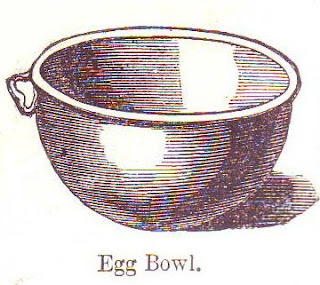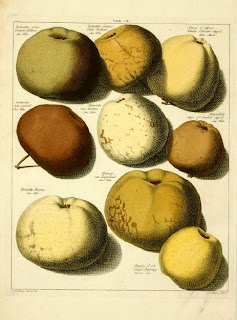 Today, April 30th …
Today, April 30th …Alice B Toklas was born on this day in 1877 in San Francisco. She is best known as the partner of the writer Gertrude Stein, with whom she lived for many years in France, and as the author in 1954 of The Alice B. Toklas Cookbook. The book is a wonderful read – as much memoir as cookbook, full of reminiscences of life in France during and after the war, and liberally sprinkled with the names of the artists and writers who gathered at their home.
Alice’s cookbook has never been out of print, and the infamous recipe for Haschich Fudge has much to do with its fame. Ironically, it is said that Alice herself had no idea of its significance, and had not tested or tasted the recipe. She supposedly asked friends for help when the deadline was approaching, and the artist Brion Gysin contributed this particular recipe ‘which anyone could whip up on a rainy day’ and which ‘might provide an entertaining refreshment for a Ladies’ Bridge Club’. The reader is advised that ‘it should be eaten with care. Two pieces are quite sufficient.’
There are many memorable passages in the book. Here is a sample from the chapter entitled Murder in the Kitchen.
'The only way to learn to cook is to cook, and for me, as for so many others, is suddenly and unexpectedly became a disagreeable necesitty to have to do it when war came and Occupation followed ….. It was at this time too that murder in the kitchen began. … The first victim was a lively carp. … I carefully, deliberately found the base of its vertebral column and plunged the knife in. I let go my grasp and looked to see what had happened. Horror of horrors. The carp was dead, killed, assassinated, murdered in the first, second and third degree. Limp, I fell into a chair, with my hands still unwashed reached for a cigarette, lighted it, and waited for the police to come and take me into custody.'
At another time, in Mallorca, their French cook “tried to teach me to murder by smothering”. The cook insists that this is not only more humane, it makes the flesh fuller and tastier than the blood-letting methods. Alice does not want to be involved, but some time later, after the war and back in Paris, she receives an unexpected present one day. She is horrified when she discovers what it is:
'…. A crate of six white pigeons, and a note from a friend saying she had noting better to offer us from her home in the country, ending with But as Alice is clever she will make something delicious of them. It is certainly a mistake to allow a reputation for cleverness to be born and spread by loving friends. It is so cheaply acquired and so dearly paid for. Six white pigeons to be smothered, to be plucked, to be cleaned, and all this to be accomplished before Gertrude Stein returned, for she did not like to see work being done. … I carefully found the spot on poor innocent Dove’s throat where I was to press and pressed. The realization had never come to me before that one saw with one’s fingertips as well as one’s eyes. It was a most unpleasant experience, though as I laid out one by one the sweet young corpses there was no denying one could become accustomed to murdering.'
I searched the book to find something suitable with which to celebrate Alice’s birthday. The only recipe specific for birthdays is this one, which will do nicely:
Birthday Ice Cream for Adults.
Toast 2 slices of dark brown bread, spread lavishly with butter on both sides. Cut into small cubes. Cover with egg nog made of 2 eggs and 1 cup rum. Add 1 quart cream and freeze.
I bet you thought I was going to give you the recipe for the fudge, right?
On this Topic ...
We previously had a story about Alice and Gertrude, with recipes for Duck in Port Wine and Flaming Peaches.
Quotation for the Day …
To cook as the French do one must respect the quality and flavour of the ingredients. Exaggeration is not admissible. Flavours are not all amalgamative. These qualities are not purchasable but may be cultivated. The haute cuisine has arrived at the enviable state of reacting instinctively to these known principles. Alice B Toklas.















